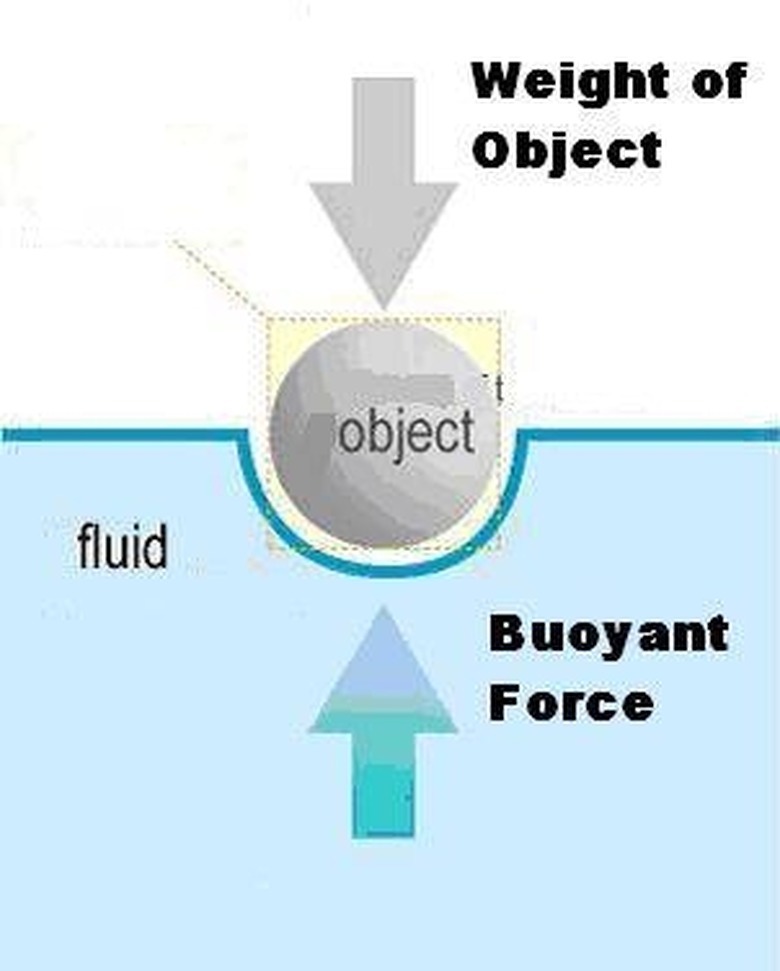How To Calculate Buoyant Force
Buoyancy, or buoyant force, is based on Archimedes' Principle. This principle states, "Any object, wholly or partly immersed in a fluid, is buoyed up by a force equal to the weight of the fluid displaced by the object." Archimides' Principle is important in hydro-engineering applications, such as shipbuilding. The steps below detail how to calculate buoyant force.
Step 1
Obtain the volume of the object on which you wish to calculate the bouyant force. We will call this value for the volume "V."
Step 2
Determine what percentage (based on volume) of the object will be submerged in the water.
Step 3
Convert this percentage to a decimal number. We will call this value "v." For example; if 100 percent of the object is to be submerged, v= 1.0 . If 50 percent of the object is to be submersed, v= 0.50 .
Step 4
Substitute this value into the equation for buoyant force: FB = (V)(v) x (SPH2O) Where FB = buoyant force and SPH2O = Specific gravity of water (considered constant at 62.4 lb per cubic foot).
Step 5
Multiply V by v, and then multiply by 62.4 in order to get the value for the buoyant force, expressed in pounds. Consider the following example of a 2-foot by 2-foot by 2 foot cube to be submersed 25 percent of the way in water. V = 2_2_2 = 8 cubic feet v = 25% = 0.25 SPH2O = 62.4 pounds per cubic foot FB = 8 *0.25 * 62.4 = 124.8 pounds
That's how you calculate buoyant force, and it helps illustrate how those large ships made of steel can float. That's quite a bit of force needed to push that 2 foot cube just one fourth of the way in the water!
TL;DR (Too Long; Didn't Read)
For laymen's calculations, the specific weight of water can be assumed to be 62.4 pounds per cubic foot, as this value does not vary significantly in normal temperature ranges.
Cite This Article
MLA
Smith, Anthony. "How To Calculate Buoyant Force" sciencing.com, https://www.sciencing.com/calculate-buoyant-force-5149859/. 24 April 2017.
APA
Smith, Anthony. (2017, April 24). How To Calculate Buoyant Force. sciencing.com. Retrieved from https://www.sciencing.com/calculate-buoyant-force-5149859/
Chicago
Smith, Anthony. How To Calculate Buoyant Force last modified March 24, 2022. https://www.sciencing.com/calculate-buoyant-force-5149859/
